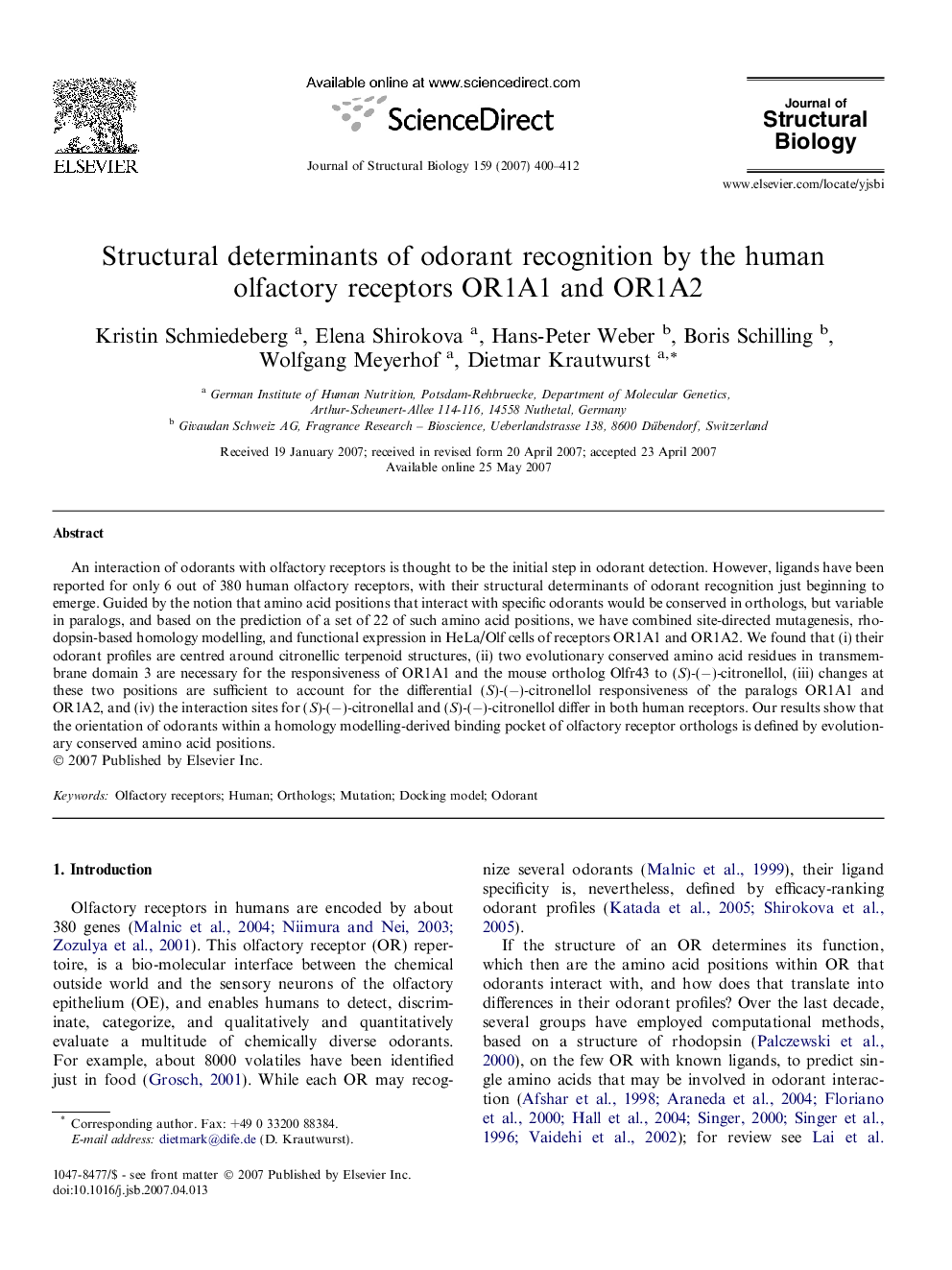| کد مقاله | کد نشریه | سال انتشار | مقاله انگلیسی | نسخه تمام متن |
|---|---|---|---|---|
| 2829290 | 1162800 | 2007 | 13 صفحه PDF | دانلود رایگان |

An interaction of odorants with olfactory receptors is thought to be the initial step in odorant detection. However, ligands have been reported for only 6 out of 380 human olfactory receptors, with their structural determinants of odorant recognition just beginning to emerge. Guided by the notion that amino acid positions that interact with specific odorants would be conserved in orthologs, but variable in paralogs, and based on the prediction of a set of 22 of such amino acid positions, we have combined site-directed mutagenesis, rhodopsin-based homology modelling, and functional expression in HeLa/Olf cells of receptors OR1A1 and OR1A2. We found that (i) their odorant profiles are centred around citronellic terpenoid structures, (ii) two evolutionary conserved amino acid residues in transmembrane domain 3 are necessary for the responsiveness of OR1A1 and the mouse ortholog Olfr43 to (S)-(−)-citronellol, (iii) changes at these two positions are sufficient to account for the differential (S)-(−)-citronellol responsiveness of the paralogs OR1A1 and OR1A2, and (iv) the interaction sites for (S)-(−)-citronellal and (S)-(−)-citronellol differ in both human receptors. Our results show that the orientation of odorants within a homology modelling-derived binding pocket of olfactory receptor orthologs is defined by evolutionary conserved amino acid positions.
Journal: Journal of Structural Biology - Volume 159, Issue 3, September 2007, Pages 400–412